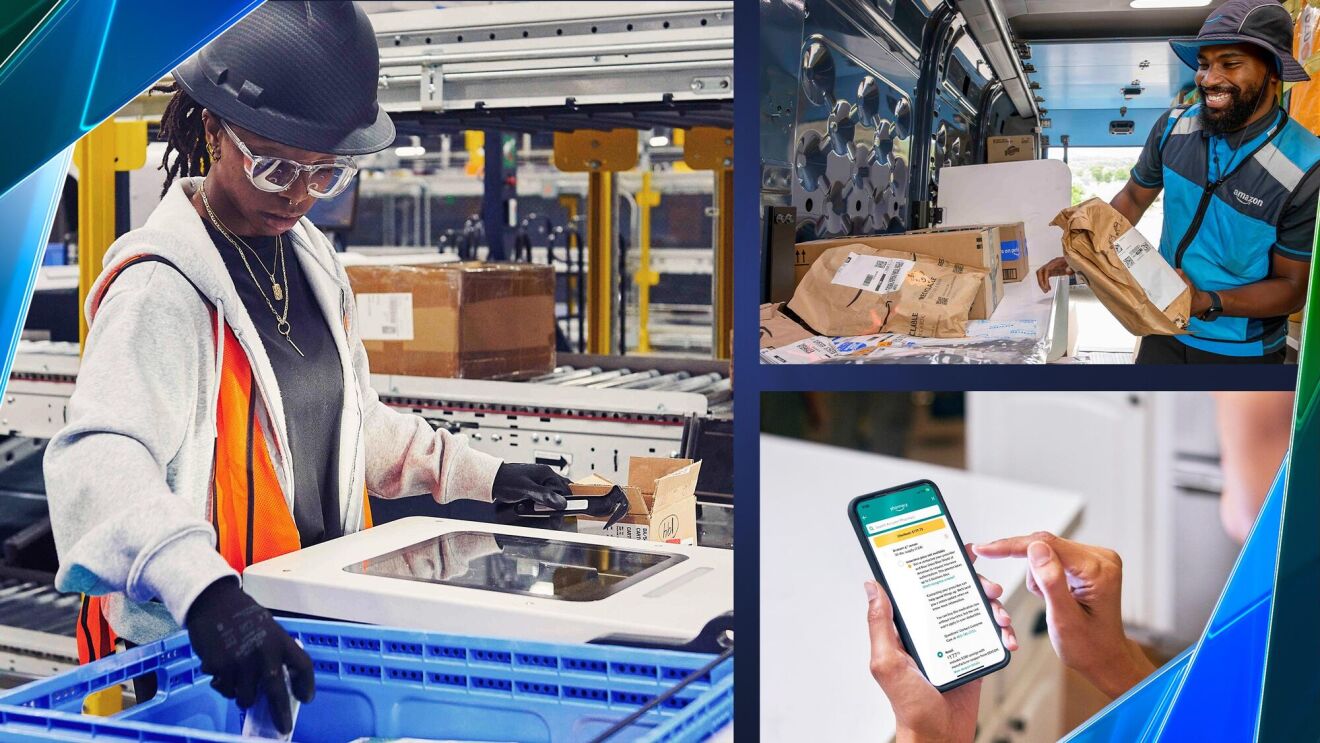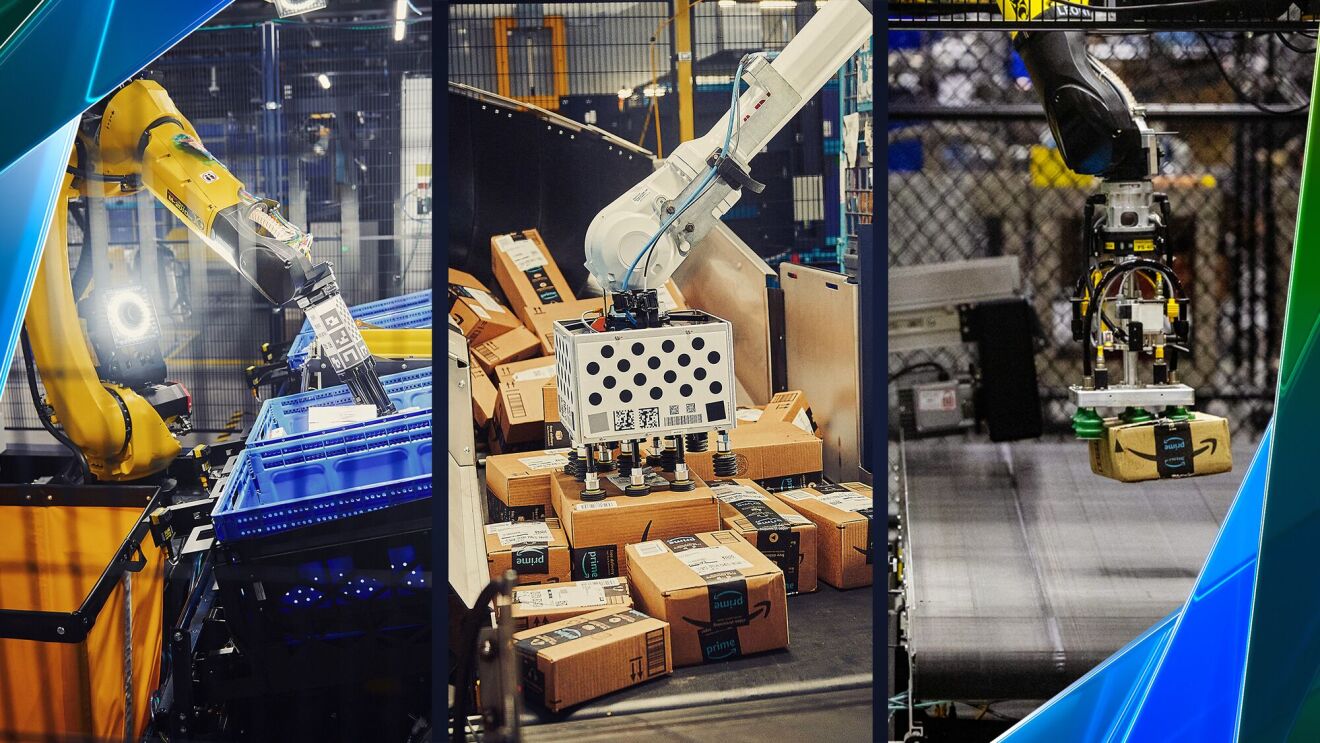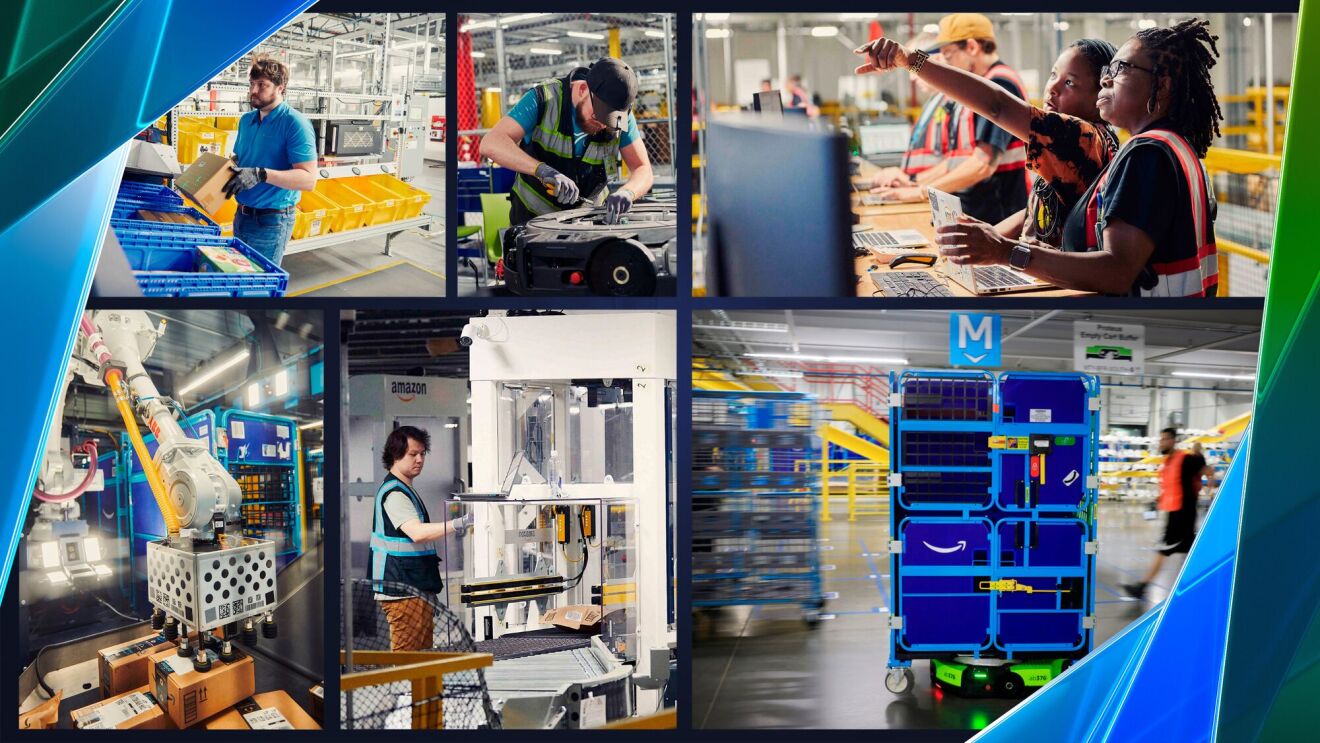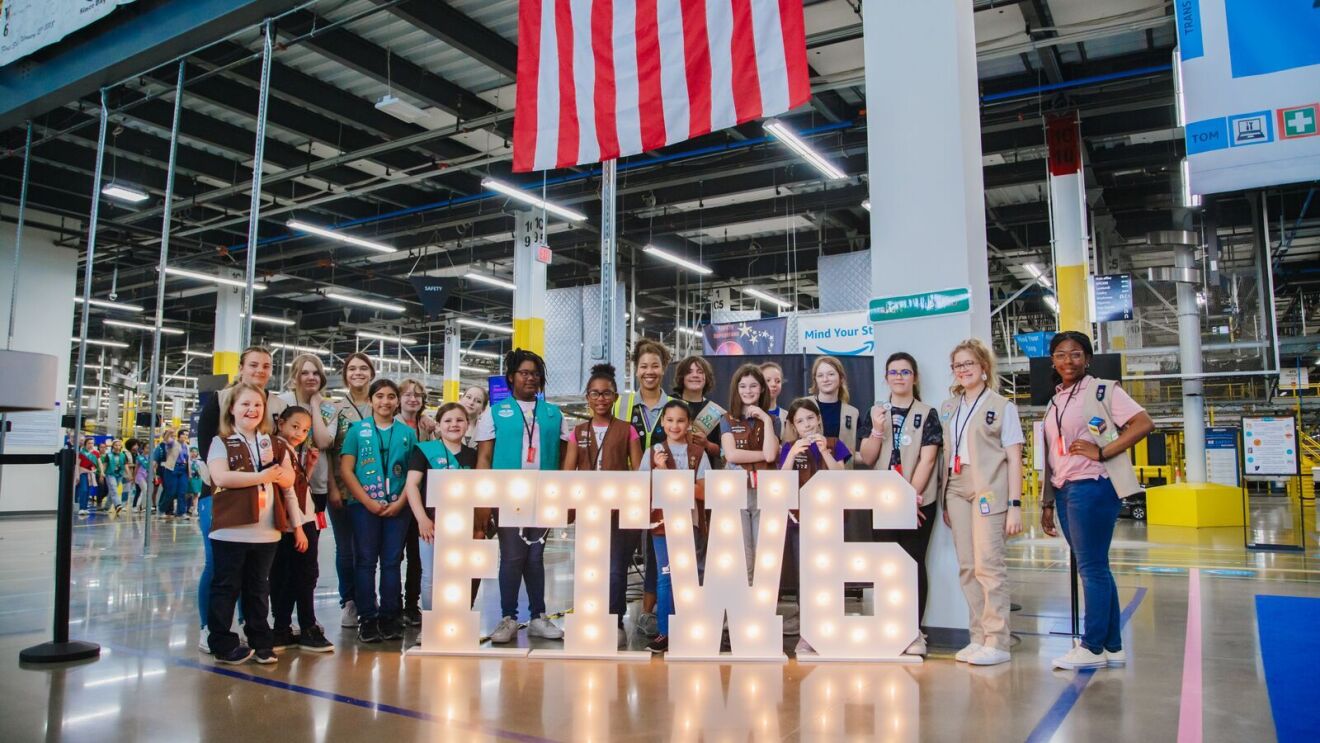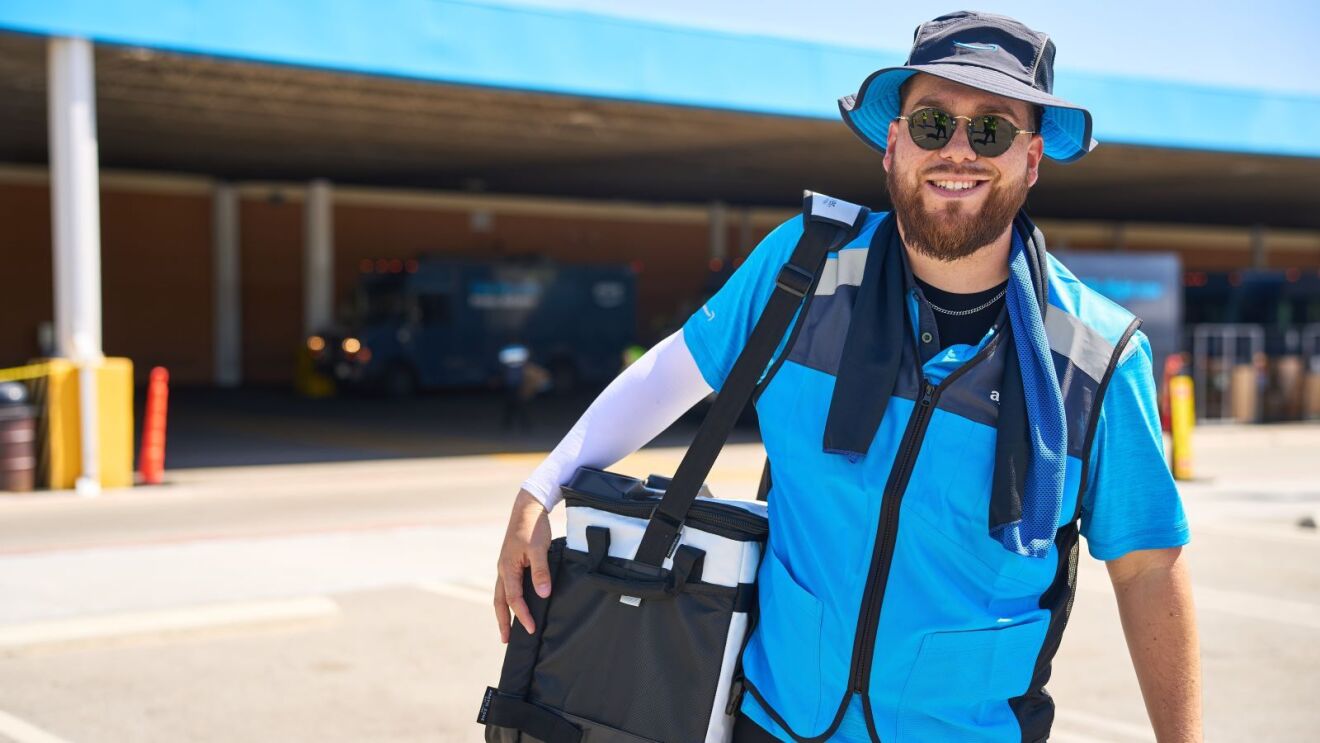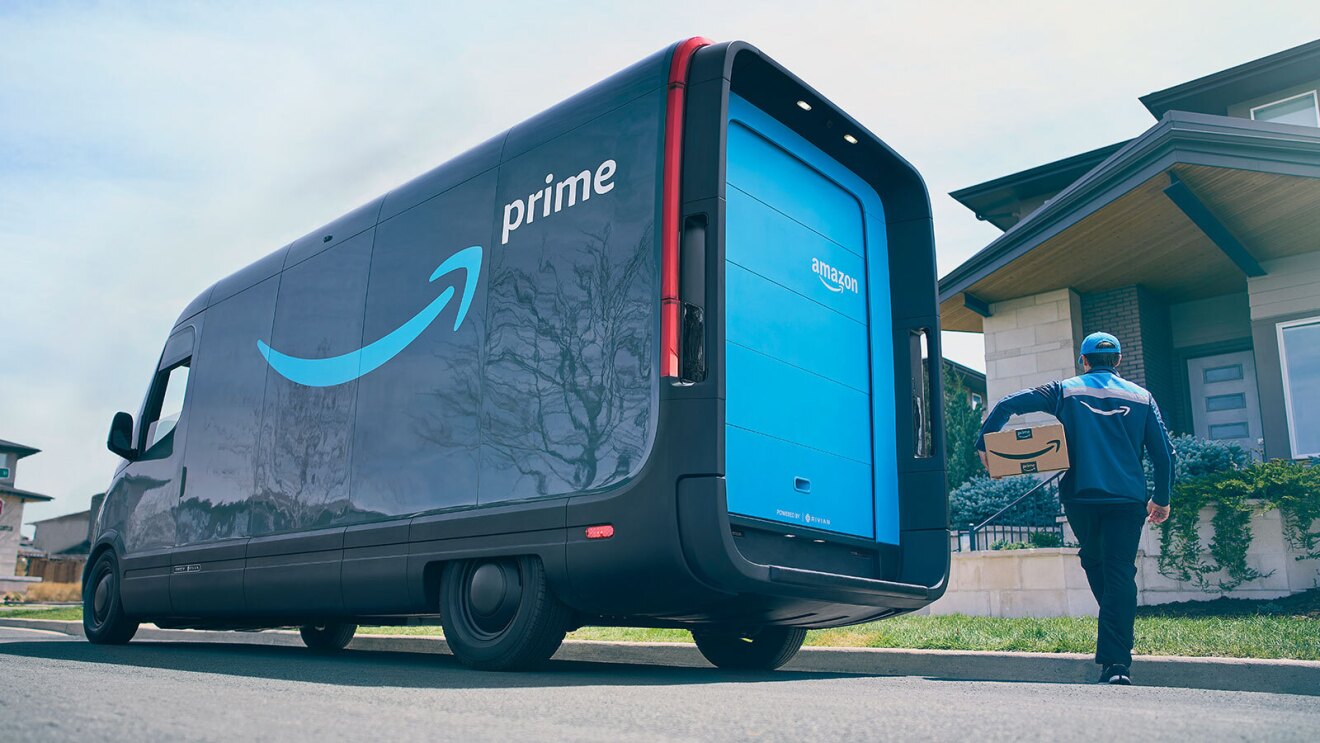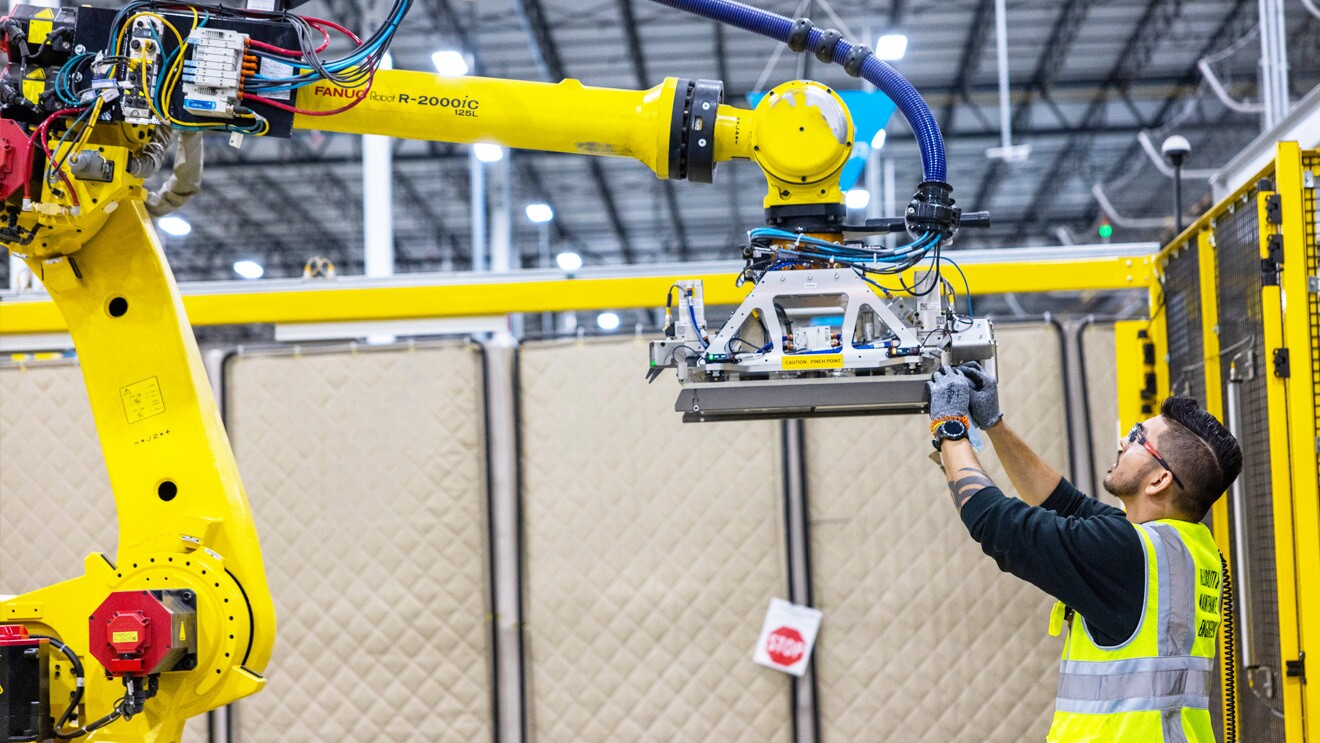Amazon is teaming up with the Massachusetts Institute of Technology (MIT) to study the impact of automation on work. Through the partnership, Amazon will support the expansion of MIT’s automation clinic, which supports engineering researchers working to better understand how employees and organizations are affected by emerging technologies like robots and artificial intelligence (AI). MIT will also lead a study in partnership with the polling research firm Ipsos to gauge public and employee sentiment around the use of robotics and AI in industrial settings.
Findings from this research will inform both MIT and Amazon as they look to develop collaborative technologies that support employees. From Amazon’s perspective, we hope to gain more insight into how we can develop robotics that enhance the employee experience and safety across our operations network, while investing in training for employees that can help them advance their career by working with new technology.

We met with Tye Brady, chief technologist at Amazon Robotics, and Julie Shah, H.N. Slater professor of Aeronautics and Astronautics at MIT, to talk about the study and the future of automation. Here are their perspectives on the importance and timeliness of this work:
Tell us more about your research and what you hope to achieve.
Shah: “I’m an AI researcher and a roboticist at MIT and the vision of my lab’s research is to be intentional about developing machine intelligence that enhances rather than replaces human capability. I am also faculty director of the Industrial Performance Center and co-lead the Work of the Future Initiative at MIT. In this work, I lead cross-disciplinary teams of engineers and social scientists to better understand how increasing automation can go hand in hand with better jobs. Our automation clinic is focused on understanding how firms can realize positive sum automation, and how design, implementation, and ROI decisions can reliably steer towards more positive outcomes for firms and workers. Our research indicates that indexing on technologies that afford flexibility in implementation is key to this.”
How do robotics support Amazon operations today and what impact have they had on jobs?
Brady: “We have more than 750,000 mobile robots in our operations and thousands of other robotic systems that help move, sort, identify, and package customer orders. It’s taken us more than 10 years to reach this scale. During that time, Amazon has hired hundreds of thousands of employees to work in our operations. We take a purpose-driven approach to how we design and deploy technology at our facilities and we consistently prioritize using robots to support safety and ease everyday tasks for our employees. Robots are good at taking on repetitive and predictable tasks and by doing so, they can free up employees to take on more complex responsibilities that help us better deliver for customers. It’s very rewarding to see the impact that has for employees who develop new skills as they work alongside our latest technologies. Since we introduced robots into our operations, we’ve created over 700 categories of new skill job types within Amazon that didn’t exist within the company beforehand. That’s in part why on-the-job training and programs like Career Choice are so important to us, as we look for ways to help our employees to grow their careers.”

Should employees see robots as collaborators?
Shah: “The mental model we hold of robots—for example, as tools or as collaborators—influences how we expect to work with them. There are benefits to both metaphors. A human directs the usage of a tool, and it is similarly advantageous to design robots to be directable in the hands of workers. The research shows that human-centered approaches to technology design and implementation reliably produce better results for workers and firms. However, as machines become more complex in their decision-making capabilities, the metaphor of a robot as collaborator, or partner, is valuable, as well. It’s not always ideal to directly command a human collaborator what to do. The key to effective teamwork is building a shared understanding of what our partners will do and what they will need to be successful. Our research shows that the best way to optimize human-robot team performance is to develop robots that are active collaborators in helping a human to learn about their capabilities, limitations, and behaviors.”
Can robots make jobs safer? Are we seeing reduced injury rates at Amazon facilities that use robotics?
Brady: Company data shows that recordable incident rates and lost-time incident rates were 15% and 18% lower, respectively, at Amazon robotics sites than they were at its non-robotics sites in 2022. From our stow and pick technology-enabled workstations to our latest robots, like Sparrow, Cardinal, and Proteus, we build and deploy robotics that can take on physically taxing activities and support safety in our operations. With each and every generation of our robot systems, we take feedback from our employees, site operators, and safety staff so that we can enhance our technology and continue strengthening its safety impact.”
How do you see jobs in warehouses evolving as new technologies take hold?
Shah: “Just as pilots today must train to fly an aircraft and also operate the autopilot technology, employees at operations with more advanced technology need to understand the process and also require new skills and training to work with new technology. As robots and automation are introduced to ease the physical burden of work, improve ergonomics, and improve safety, the human’s role also changes. An employee may shift from working at one station, to supervising the operation of multiple stations or multiple robots. We see very interesting examples of new types of jobs, in which the cognitive aspects of setting-up, supervising, and troubleshooting robotics and automation are emphasized.”

Do you envision a distant future with fully automated warehouses and fulfillment centers?
Brady: “We don’t think it's practical to build technology where customers can’t benefit from all the great things people do well. The investments we are making in robotics start with the principle of how these systems can work collaboratively alongside employees and that’s how we are building for the long term. Our vision is to design solutions where we can extend human capabilities and drive the best results.”



